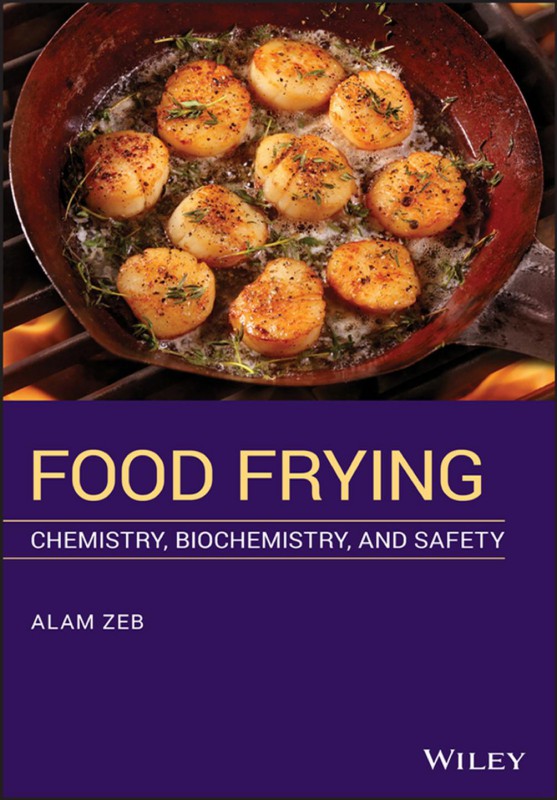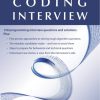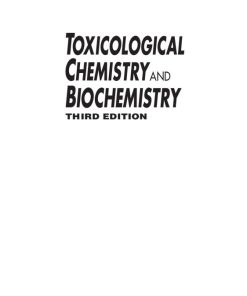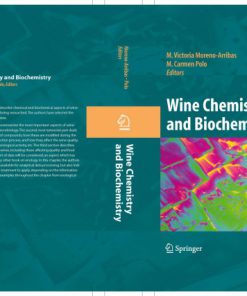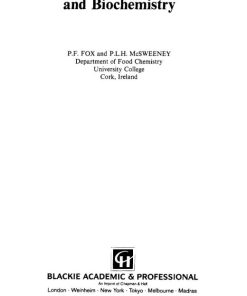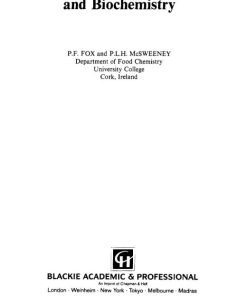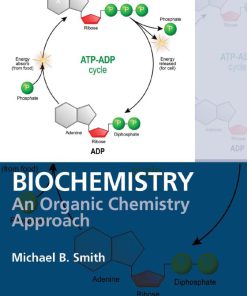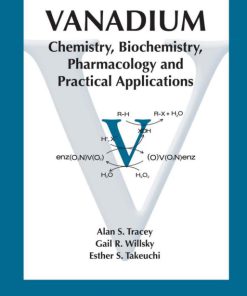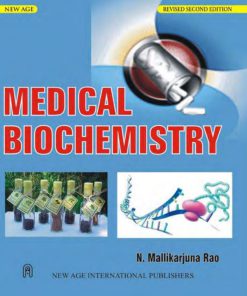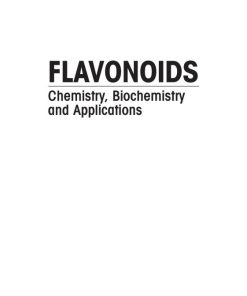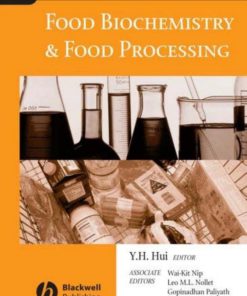Food Frying Chemistry Biochemistry and Safety 1st Edition by Alam Zeb 1119468515 9781119468516
$50.00 Original price was: $50.00.$25.00Current price is: $25.00.
Authors:Alam Zeb , Series:Biochemistry [58] , Tags:Technology & Engineering; Food Science; General; Science; Life Sciences; Horticulture , Author sort:Zeb, Alam , Ids:9781119468516 , Languages:Languages:eng , Published:Published:Mar 2019 , Publisher:John Wiley & Sons , Comments:Comments:A wide-ranging exploration of the science and practice of food frying Frying is one of the world’s most popular methods of food preparation. Whether using oils or fats, it is valued for the particular flavors and textures it can bring, and represents a multibillion-dollar sector of the global economy. Food Frying: Chemistry, Biochemistry and Safety explores this important cooking technique in its scientific dimensions, charting the relationships between the chemical reactions produced during frying, the changes in food quality that these engender, and associated digestive and health-related issues. By outlining these connections, the author provides an aid to a safer, healthier approach to food frying. Topics covered range from culturally specific forms of frying to detailed analyses of the chemical and biochemical processes involved in its practice. Delivering these insights in a practical and easy-to-follow manner, this unique text includes: A complete survey of food frying, encompassing cultural, chemical, biochemical, and toxicological concerns Guidance on the accurate assessment of health, quality, and safety issues associated with food frying Coverage of the latest technologies and methods involved with frying Information on the possible future development of fried foods Food Frying: Chemistry, Biochemistry and Safety is an invaluable resource for all those who work with fried foods, whether they be food industry professionals, food scientists, or workers in the oil and fat industries.
Food Frying Chemistry Biochemistry and Safety 1st Edition by Alam Zeb – Ebook PDF Instant Download/Delivery. 1119468515, 9781119468516
Full download Food Frying Chemistry Biochemistry and Safety 1st Edition after payment
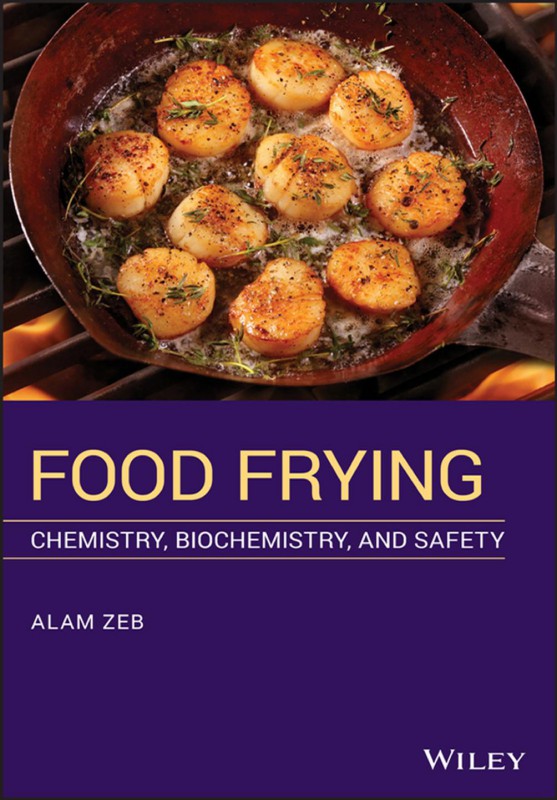
Product details:
ISBN 10: 1119468515
ISBN 13: 9781119468516
Author: Alam Zeb
Frying is one of the world’s most popular methods of food preparation. Whether using oils or fats, it is valued for the particular flavors and textures it can bring, and represents a multibillion-dollar sector of the global economy. Food Frying: Chemistry, Biochemistry and Safety explores this important cooking technique in its scientific dimensions, charting the relationships between the chemical reactions produced during frying, the changes in food quality that these engender, and associated digestive and health-related issues.
By outlining these connections, the author provides an aid to a safer, healthier approach to food frying. Topics covered range from culturally specific forms of frying to detailed analyses of the chemical and biochemical processes involved in its practice. Delivering these insights in a practical and easy-to-follow manner, this unique text includes:
- A complete survey of food frying, encompassing cultural, chemical, biochemical, and toxicological concerns
- Guidance on the accurate assessment of health, quality, and safety issues associated with food frying Coverage of the latest technologies and methods involved with frying
- Information on the possible future development of fried foods
Food Frying: Chemistry, Biochemistry and Safety is an invaluable resource for all those who work with fried foods, whether they be food industry professionals, food scientists, or workers in the oil and fat industries.
Food Frying Chemistry Biochemistry and Safety 1st Table of contents:
Part I: Concept of Food Frying
1 Food Frying
1.1 Introduction
1.2 History of Frying
1.3 Mechanism of Frying
1.4 Why We Fry Foods
1.5 Key Concepts
References
2 Frying Techniques
2.1 Introduction
2.2 Concept of Deep Frying
2.3 Tools Used in Frying
2.4 Optimized Conditions
2.5 Types of Frying
2.6 Tips to Remember During Frying
2.7 Choice of Frying Method
2.8 Key Concepts
References
3 Frying and Culture
3.1 Introduction
3.2 The Common Point
3.3 Frying in American Cuisines
3.4 Frying in European Cuisines
3.5 Frying in Asian Cuisines
3.6 Frying in African Cuisines
3.7 Frying in Middle Eastern Cuisines
3.8 Key Concepts
References
Part II: Chemistry of Food Frying
4 Chemistry of the Frying Medium
4.1 Frying Medium
4.2 Classification and Choice of Frying Medium
4.3 Chemistry of the Frying Medium
4.4 Chemistry of Lipid Oxidation During Frying
4.5 Formation of Volatile Products
4.6 Sterol Oxidation
4.7 Tocopherol Oxidation
4.8 Formation of Trans Fatty Acids
4.9 Techniques for Measuring Lipid Oxidation
4.10 Key Concepts
References
5 Chemistry of Fried Foods
5.1 Introduction
5.2 Carbohydrates
5.3 Proteins and Amino Acids
5.4 Lipids
5.5 Micromolecules
5.6 Frying of Carbohydrate‐Rich Foods
5.7 Frying of Protein‐Rich Foods
5.8 Frying of Seafood
5.9 Frying of Vegetables
5.10 Physicochemical Characteristics of Fried Foods
5.11 Improving Product Quality
5.12 Key Concepts
References
6 Chemistry of Interactions in Frying
6.1 Introduction
6.2 Factors Affecting the Frying Medium
6.3 Factors Affecting the Food
6.4 Heat Transfer
6.5 Mass Transfer
6.6 Nutritional Value Retention
6.7 Key Concepts
References
7 Analysis of Frying
7.1 Introduction
7.2 Analysis of Triacylglycerols
7.3 Analysis of FA Oxidation Products
7.4 Analysis of Sterol Oxidation
7.5 Analysis of Sensory Metabolites
7.6 Analysis of Heterocyclic Amines
7.7 Analysis of Acrylamide
7.8 Analysis of Tocopherols
7.9 Analysis of Polyphenolic Compounds
7.10 Analysis of Other Minor Compounds
7.11 Key Concepts
References
Part III: Biochemistry of Food Frying
8 Digestion and Absorption of Fried Foods
8.1 Introduction
8.2 Acceptability of Fried Foods
8.3 Digestion of Fried Foods
8.4 Absorption of Fried Foods
8.5 Excretion of Fried Foods
8.6 Key Concepts
References
9 Nutrition and Metabolism of Fried Foods
9.1 Introduction
9.2 Metabolism of Fried Lipids
9.3 Metabolism of Fried Proteins
9.4 Metabolism of Fried Carbohydrates
9.5 Metabolism of Other Metabolites
9.6 Key Concepts
References
10 Fried Foods in Health and Disease
10.1 Introduction
10.2 Fried Foods and Health
10.3 Fried Foods and Cancer
10.4 Fried Foods and Diabetes
10.5 Fried Foods and Cardiovascular Diseases
10.6 Fried Foods and Aging
10.7 Key Concepts
References
Part IV: Safety in Food Frying
11 Safety Assessment of Food Frying
11.1 Introduction
11.2 Guideline for Assessment
11.3 Quality Indicators for Used Frying Oils
11.4 Physical Assessment
11.5 Chemical Assessment
11.6 Evaluation of Fried Foods
11.7 The Future of Fried Food Safety
11.8 Key Concepts
References
12 Toxicity of Food Frying
12.1 Introduction
12.2 Toxicity of Oxidized Triacylglycerols
12.3 Toxicity of Acrylamide
12.4 Toxicity of Acrolein
12.5 Toxicity of Amines and Alcohols
12.6 Toxicity of Aldehydes
12.7 Pro‐Oxidants
12.8 Disposal of Fried Foods
12.9 Disposal and Use of the Frying Medium
12.10 Key Concepts
References
13 Improving the Quality of Fried Foods
13.1 Introduction
13.2 Improving the Quality of Fried Foods
13.3 Mitigation Strategies for Acrylamide
13.4 Reducing Oil Uptake
13.5 Fortification
13.6 The Role of Natural Antioxidants
13.7 Packaging of Fried Foods
13.8 Quality Control in Frying
13.9 Key Concepts
References
14 The Future of Food Frying
14.1 Introduction
14.2 Current Strategies
14.3 Future Scenarios
14.4 Hurdles
14.5 Key Concepts
People also search for Food Frying Chemistry Biochemistry and Safety 1st:
5 food safety facts
food chemistry unit
chemistry fry
biochemistry in cooking
You may also like…
eBook PDF
Toxicological Chemistry and Biochemistry 3rd Edition by Stanley Manahan 1566706181 9781566706186

